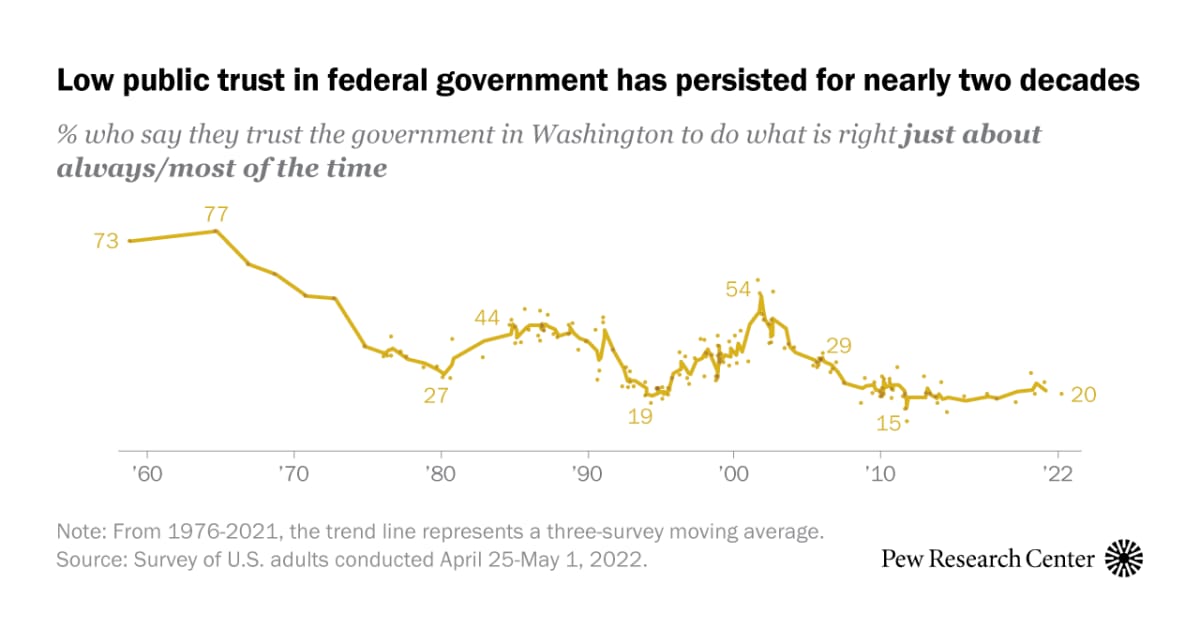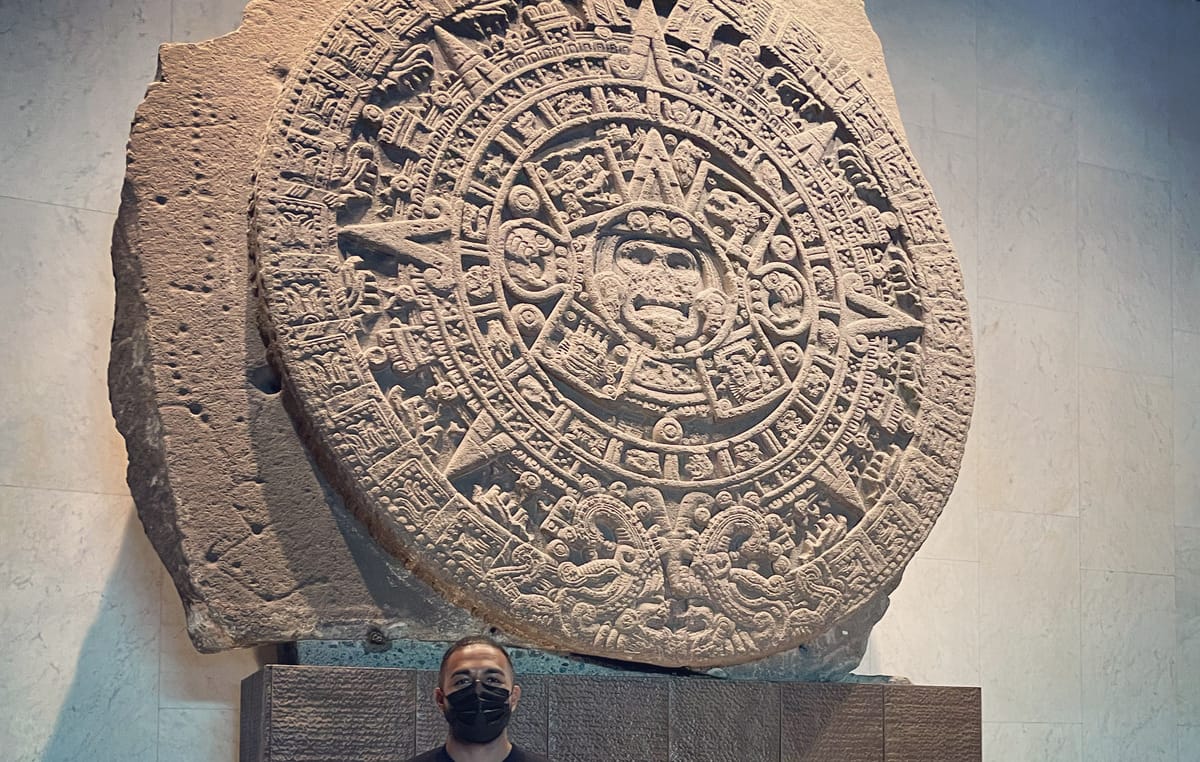
Happy Sunday {{First Name|fellow wayfinder}}!
Last week, we talked about how wolf pack dynamics influenced my career. This week, we look at 3 amazing lessons from the ancient Toltecs and Aztecs, which can hopefully teach us something as we build out the future of Web3.
Let's dive in.
☕️ Reading time: 8 minutes
Who were the Toltecs?
The Toltecs were an ancient Meso-american people who flourished in central Mexico between the 10th and 12th centuries CE. The Toltec Empire was a semi-mythical origin story told by the Aztecs, who were responsible for the Aztec arts and sciences.
The Toltecs were renowned for their art, architecture, and military prowess. Their influence can still be seen in many modern Mexican cultures, as they were often revered by the later Maya and Aztecs.
Why this topic? Why today?
Most people may be familiar with the Maya civilization, but few know much about the Aztec and Toltec traditions (who occupied relatively the same areas over time).
As someone who’s constantly studying ancient cultures, to see what wisdom they have to share with us as we build new digital worlds (e.g. Web3/metaverse), this post was inspired by a book called The Real Toltec Prophecies by Sergio Magaña.
Magaña shares wisdom I’ve yet to find in Western literature, but resonates with some of my own personal knowledge and experiences as someone with Polynesian heritage.
This is due to the fact that most pre-colonial societies recorded their history via oral traditions. So some of the knowledge from these traditions are only just starting to make their way out to the world.
But they are slowly being corroborated by scientists, anthropologists, and archaeologists.
Okay, so where did this knowledge come from?
According to Magaña, the Aztec calendar was divided into natural time cycles known as “Suns,” each lasting ~6,625 years. His knowledge was passed down from various teachers. According to the teachings, we are currently transitioning from the “Fifth Sun” to the “Sixth Sun,” a transition which began around 1991 (and is a 29-year period).
The whole Dooms Day scenario of December 12, 2012, was due to a misinterpretation of the Mayan calendar by Westerners. The Mayans recorded the end of multiple cycles, emphasizing its significance. But it did not mean the end of the world, just the world as we knew it.
Now, whether you believe in these things or not is irrelevant.
There are specific lessons that the Aztecs recorded that may very well help us in the future. Especially as we move into the “New World Order” amidst threat of another World War (e.g. Russia vs. Ukraine), economic upheaval (e.g. a global recession worse than 2008), and technology revolutions (e.g. Bitcoin).
First, Second & Fifth Suns
Now, everything I’m sharing is distilled from my readings of Magaña. So there may be some discrepancies in the numbers or calculations, since some contest the actual number cycles.
If you want further details, please read his materials directly and/or do your own research. The important thing is that you take the essence of the lessons, instead of getting too caught up in the details (leave that to the pros).
Each “Sun” cycle (of 6,625 years) is like the 365 day cycles that Earth orbits our own sun. However, for the Aztecs, they knew that our own sun orbits the Pleiades star system roughly every 26,500 years. They just used the same name "Sun" to refer to inner “sun” cycles. So this would give you roughly four “Sun” cycles within a 26,500 year orbit around the Pleiades.
Takes things to another level, no?
So like our own reflections of recorded history, each time period (or “Age”) has a name with lessons to match. From the Neolithic Age to Medieval Age to Information Age.
I’m going to take you through three specific Suns - the First, Second & Fifth - as recorded by the Aztecs. This is because they are the most relevant to the “Sixth Sun” we are transitioning into today, and has applicable lessons for entrepreneurs in the Web3 space.
1. Lack of Honesty Brings Ruin (First Sun Lesson)
According to Magaña, the First Sun’s lesson was “lack of honesty brings ruin.” This is quite fitting for modern times, since truth and honesty are becoming harder and harder to determine online.
Bitcoin is often referred to as the “truth machine,” yet it has ironically brought out the most scammers, theft, and criminal activity.
Based on Aztec teachings, this is natural though because of the transition from our previous cycle. There will be many who cling to the “old ways” of the Fifth Sun, which is defined by an outer masculine energy, which is familiar.
The Aztecs had their own form of Yin and Yang principles (Day and Night), which highlighted the natural cycles of masculine vs. feminine dominance in each age or Sun. The Sixth Sun is expected to be dominated by the feminine, but not without its struggles during the transition.
Notice an increase in the "rise of feminine power?" That's not a coincidence.
But there are specific questions to ask during this time, starting with yourself:
Who do I believe I am?
Who am I, really?
How would I like to spend this transition?
Am I willing to change enter a different world without missing the previous one?
The next set of questions to ask are of others - including our governments and even mainstream media:
Can they be trusted?
Are they telling the truth?
Are they pushing an agenda, and if so, what and why?
If we do not draw our own conclusions - choosing instead to rely on religion, authorities, or unquestioned traditions - then we may simply repeat patterns that have remained in our collective unconscious for the last 26,500 years.
How?
Well, according to a growing body of research in the field of epigenetics, “trauma can leave a chemical mark on a person’s genes, which can then be passed down to future generations. The mark doesn’t cause a genetic mutation, but it does alter the mechanism by which the gene is expressed. This alteration is not genetic, but epigenetic.”
In the realm of Web3, which many of us are working together to build, we are essentially passing on the good and bad of our ancestors (whether we are aware of this or not).
So the question will be, how much of what we are creating is purely of our own creation, or inherited? If it is inherited, do we have the power to make corrections sooner rather than later. My answer is yes. Otherwise, our systems and technologies will soak up and amplify more "bad" than good.
2. Fear of Change, Laziness & Lack of Discipline (Second Sun Lesson)

In the Second Sun era, the “weaknesses” that wiped most out were fear of change, laziness, and lack of discipline. We can see this manifested in modern times.
During the 2020-2021 pandemic, there were those who were so afraid of what was happening, they expected the government to take care of everything and return everyone to “normal.” The fear caused some people to condemn others, break away from family and friends, and even buy out all the toilet paper at supermarkets (remember that?).
It was surely a time of mass hysteria.
However, on the other side, there were some who found solace in the lockdowns. They started appreciating what they had, the time with family and loved ones, as well as the reduction in work commute.
Are you sitting around waiting for things to get back to normal? Or are you handling the crisis by adapting and turning lemons into lemonade?
If the former, you are under the influence of the Second Sun. If the latter, you are embracing the Sixth Sun.
During the pandemic, we saw the rise of NFTs, remote work, and even clearer skies (less people = less pollution). Some got laid off from work, while others created new income streams. A swarm of 30/60/90 day “build in public” challenges made their way to social media, as people sought more accountability consistency.
This “accountability” factor tied in with the meta trend of holding governments and established institutions to account, as a result of overall decreased trust.

As you can see, this trust aspect comes back to lessons from the First Sun.
3. If societies do not document their history, memory is bound to disappear (Fifth Sun Lesson)
This lesson is not taken directly from Magaña's book, but from another titled Fifth Sun: A New History of the Aztecs (2019) by Camilla Townsend.
I particularly like this lesson, however, since it ties into the industry I now find myself in: blockchain. Even though other historians might argue that the lesson from this period was that war and ritual sacrifice was not necessary.
With all the talk of Bitcoin, Ethereum, NFTs, and more, there is a huge case to be made for using underlying blockchain technology as a way to better determine truth throughout history.
We're all familiar with the saying, "history is by the victors." And this has certainly been true to date. However, in Camilla's book, she brings out Aztec history as recorded by the Aztecs themselves.
Since most of what we know about Meso-america today is typically from a European lens, being able to have a way to view history from multiple lenses is going to be massive.
Advancements in Artificial Intelligence (AI), Big Data, and Machine Learning (ML) is seeing the information processing scale exponentially. But the biggest issue to date has been poor data quality, or data which can't entirely be relied upon.
Therefore, in a future blockchain world - if we get it right - micro (or even nano) payments may help provide a more reliable timestamp of historical actions, along with their source, that can be verified and corroborated. If we do not get this right, then we may continue to suffer from what author Clive James calls, "cultural amnesia."
Ancient cultures like the Aztec kept their histories alive through their oral traditions. Blockchain technology could very well strengthen this by pulling together and comparing the oral stories of various families, clans, or civilizations.
I can tell you this is going to matter for Web3 and beyond, because there are already things like "Historical NFTs," which are growing in popularity:
Summary
In summary, here are the 3 key lessons:
First Sun: Lack of honesty brings ruin
Second Sun: Weakness comes from fear of change, laziness, and lack of discipline
Fifth Sun: If societies do not document their history, memory is bound to disappear
In the Fifth Sun, you could easily hide things or manipulate the truth. In the Sixth, that may not be as easy. In the future, having a good record of your own actions will help you advance in society (or not). Some fear this (e.g. social credit scores in China), which is why the system (blockchain) from which truth is stored must be kept as neutral or "decentralized" as possible. Otherwise, we will carry on the mistakes of the past.
What were your key takeaways from the Toltecs & Aztecs? How do you see this applied to your own efforts in Web3?
Until next week, remember: through patience & persistence, it will come.
Last week's premium newsletters:
Daily #131: Get what you give, get paid what you live
Daily #132: Dia de Los Muertos
Daily #133: Ofrendas, ancestors & learning from the past
Daily #134: WhatsApp Communities launched
Daily #135: Singapore's 5 elements of fintech
❤️ Loved this content? Get deeper insights about growing one-person businesses, building productive communities in the blockchain space, and applying ancestral wisdom. Click here to upgrade for $10/mo.




